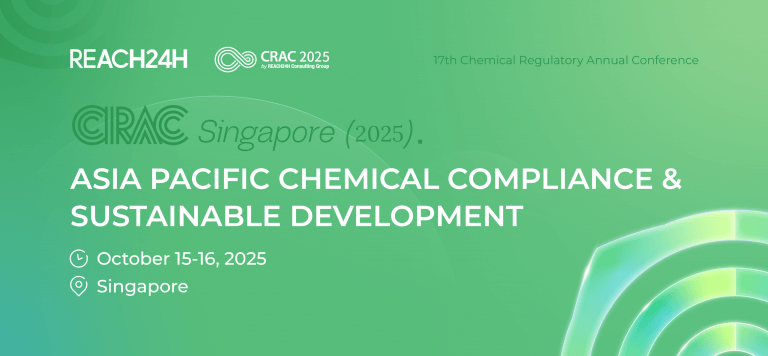Introduction
As of the end of September 2024, data from the National Medical Products Administration (NMPA) shows that 5 new cosmetic ingredients have been revoked and 3 new ingredients have been denotified. Among these revoked and denotified ingredients, 2 were reclassified as existing cosmetic ingredients.
Therefore, before applying for notification/registration of a new cosmetic ingredient, companies must thoroughly verify whether the proposed ingredient qualifies as a "new cosmetic ingredient" and conduct pre-assessment to avoid regulatory risks.
In this article, REACH24H will summarize the criteria or definition for determining new cosmetic ingredients based on relevant regulations and guidelines, provide examples, and assist companies in accurately assessing whether their ingredients meet the requirements for registration.
Regulatory Basis for New Cosmetic Ingredient Determination
Cosmetics Supervision and Administration Regulation:
Defines a “new cosmetic ingredient” as a natural or artificial ingredient used in cosmetics for the first time within China.Technical Guiding Principles for the Determination of New Cosmetic Ingredients (Draft for Comment) (January 2023):
Issued by the China National Institutes for Food and Drug Control (NIFDC), this document provides detailed guidance on classification and evaluation criteria.Technical Guiding Principles for the Definition and Research of New Cosmetic Ingredients (Draft for Comment)(December 2023):
Further clarifies the scope and requirements for new ingredients from multiple dimensions, addressing industry feedback and aligning with evolving regulatory needs.
How to Determine New Cosmetic Ingredients
| "Cosmetics Supervision and Administration Regulation" | "Technical Guiding Principles for the Determination of New Cosmetic Ingredients (Draft for Comment)" Jan 2023 | "Technical Guiding Principles for the Definition and Research of New Cosmetic Ingredients (Draft for Comment)" Dec 2023 |
| New cosmetic ingredients refer to natural or artificial ingredients used in cosmetics for the first time within China. | Natural or artificial ingredients used in cosmetics for the first time within China, with expected application methods, application sites, and intended purposes conforming to the definition of cosmetics. | Added classification based on Intended use and R&D Innovation level: - By Intended use: - Ingredients acting on cosmetic products - Ingredients acting on human surfaces - Ingredients acting on products while influencing human surfaces. |
| Adjustments to the intended use or safe dosage of existing cosmetic ingredients. | - By R&D Innovation level: - New ingredients used globally or domestically for the first time - Substantially improved or innovated existing cosmetic ingredients. |
Examples of New Cosmetic Ingredients
Classification as New Cosmetic Ingredients
Expected Application Methods: Rubbing, spraying, or similar methods.
Expected Application Sites: Skin, hair, nails, lips, or other human surfaces.
Expected Intended Use/Purpose:
Matrix ingredients that also significantly affect human surfaces (e.g., softening skin, retaining moisture, protecting against external irritants).
Moisturizers, emollients, anti-wrinkle agents, whitening agents, sunscreens, hair dyes, anti-hair loss agents, etc., used for cleansing, protecting, beautifying, or decorating.
Matrix ingredients: Oil-based materials, powder-based materials, gel-based materials, solvents.
Auxiliary ingredients: Stabilizers, colorants, preservatives, antioxidants, chelating agents, fragrances, pH adjusters.
Ingredients acting on cosmetic products:
Ingredients acting on human surfaces:
Ingredients acting on products while influencing human surfaces:
R&D Innovation Level:
New ingredients used globally for the first time.
New ingredients used domestically (within China) for the first time.
Substantially improved or innovated existing ingredients (e.g., altering usage purposes, optimizing preparation processes, enhancing safety, efficacy, stability, or quality control).
Judgment of Non-New Cosmetic Ingredients
| Cosmetics Supervision and Administration Regulation | "Technical Guiding Principles for the Determination of New Cosmetic Ingredients (Draft for Comment)" Jan 2023 | "Technical Guiding Principles for the Definition and Research of New Cosmetic Ingredients (Draft for Comment)" Dec 2023 |
| / | - Ingredients with application methods, application sites, or intended purposes inconsistent with the definition of cosmetics. | |
| / | - Ingredients with actual functions or objective efficacy exceeding the scope of cosmetics. | - Ingredients with actual efficacy in cosmetics exceeding the scope of cleansing, protecting, beautifying, or decorating. |
| - Ingredients listed as prohibited components in the Cosmetics Safety Technical Specifications. | - Ingredients prohibited by cosmetics-related technical regulations, structurally/functionally similar to prohibited ingredients, or deemed harmful under normal, reasonable, and foreseeable use conditions after safety assessments. | |
| - Ingredients already included in the Inventory of Existing Cosmetic Ingredients. | - Ingredients listed in the Inventory of Existing Cosmetic Ingredients (including specific ingredients under categorized entries) or sharing the same functional basis as listed ingredients. |
Examples of Non-New Cosmetic Ingredients
Classification as Non-New Cosmetic Ingredients
Excluded Application Methods: Oral intake, injection, burial, fumigation, inhalation, implantation, etc.
Excluded Application Sites: Below the stratum corneum, ear canals, eyes, mucous membranes (oral, nasal, reproductive systems).
Ingredients with Efficacy Beyond Cosmetic Scope:
Medical purposes: Treating skin diseases, wound healing, scar repair.
Repelling or killing insects/microorganisms.
Mechanisms involving hormone regulation, tissue regeneration, cell proliferation, DNA repair, or anti-inflammation.
Prohibited Ingredients:
Listed in the Catalog of Prohibited Cosmetic Ingredientsor Catalog of Prohibited Botanical/Animal Ingredients.
Ingredients structurally, functionally, or chemically similar to prohibited ingredients (e.g., THC vs. CBD).
Ingredients failing safety assessments.
Existing Ingredients:
Listed in the Inventory of Existing Cosmetic Ingredients(e.g., "collagen" as a category includes animal-derived, recombinant, or specific collagen types).
Specific parts of listed ingredients (e.g., "ginseng extract" includes all parts of ginseng).
Ingredients sharing the same functional basis (e.g., sodium hyaluronate vs. potassium hyaluronate).
REACH24H Compliance Tips
REACH24H suggests that enterprises should evaluate whether an ingredient qualifies as a new cosmetic ingredient before applying for registration, based on regulations and guidelines. With extensive experience in new cosmetic ingredient registration, REACH24H offers pre-assessment services to help reduce compliance risks.
If you have any questions in this regard, please feel free to contact us at customer@reach24h.com.





